Related Research Articles

Seyyed Abolhassan Banisadr was an Iranian politician, writer, and political dissident. He was the first president of Iran after the 1979 Iranian Revolution abolished the monarchy, serving from February 1980 until his impeachment by parliament in June 1981. Prior to his presidency, he was the minister of foreign affairs in the interim government. He had resided for many years in France where he co-founded the National Council of Resistance of Iran.
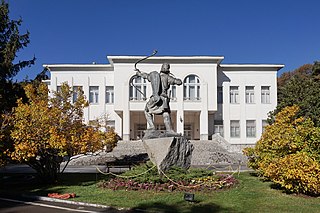
The Sa'dabad Complex is a 110 hectare complex built by the Qajar and Pahlavi monarchs, located in Shemiran, Greater Tehran, Iran. Today, the official residence of the President of Iran is located adjacent to the complex.

The prime minister of Iran was a political post that had existed in Iran (Persia) during much of the 20th century. It began in 1906 during the Qajar dynasty and into the start of the Pahlavi dynasty in 1923 and into the 1979 Iranian Revolution before being abolished in 1989.

Alborz Mandegar High School is a college-preparatory high school located in the heart of Tehran, Iran. It is one of the first modern high schools in Asia and the Middle East, named after the Alborz mountain range, north of Tehran. Its place in the shaping of Iran's intellectual elite compares with that of Eton College in England and institutions such as Phillips Academy, Phillips Exeter Academy, and Milton Academy in the United States.
Aryamehr was the title used in the Pahlavi dynasty by Shahanshah Mohammad Reza Shah of Iran. It means Light of the Aryans.
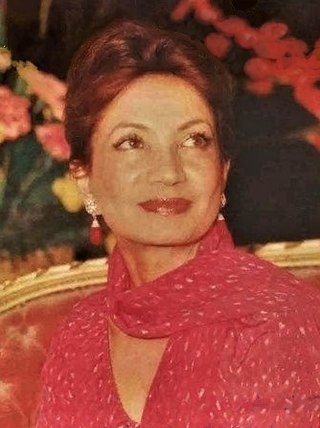
Ashraf ol-Molouk Pahlavi was the twin sister of Mohammad Reza Pahlavi, the last Shah of Iran (Persia), and a member of the Pahlavi dynasty. She was considered the "power behind her brother" and was instrumental in the 1953 coup that overthrew Prime Minister Mohammad Mosaddegh in favour of strengthening the monarchical rule of the Shah. She served her brother as a palace adviser and was a strong advocate for women's rights. Following the Iranian Revolution in 1979, she lived in exile in France, New York, Paris and Monte Carlo and remained outspoken against the Iranian Islamic Republic.

Sepahbod Nader Jahanbani was an Iranian general, distinguished fighter pilot of Imperial Iranian Air Force (IIAF) and the deputy chief of the IIAF under Mohammad Reza Shah Pahlavi, the last Shah of Iran. Despite being executed in 1979 by Islamic Revolutionaries, he is widely lauded as the "father of the Iranian Air Force" along with General Mohammad Khatami and General Amir Hossein Rabii, for modernizing the air force to become a potent and powerful force whose advanced equipment and training they acquired for Iran, such as the F-14 Tomcat, would save Iran's crucial infrastructure during the Iran–Iraq War. He was the leader of the Golden Crown, the first and national aerobatics display Iranian team. He is nicknamed the "blue eyed general of Iran". By many accounts, he is considered one of the best and most capable pilots of his time.

The mausoleum of Reza Shah, located in Ray south of Tehran, was the burial ground of Reza Shah Pahlavi (1878–1944), the penultimate Shahanshah (Emperor) of Iran. It was built close to Shah-Abdol-Azim shrine.

Mohammad Reza Pahlavi, widely known in the West as Mohammad Reza Shah, was the last Shah (King) of the Imperial State of Iran from 16 September 1941 until his overthrow in the Islamic Revolution on 11 February 1979. Owing to his status, he was usually known as the Shah.

Farah Pahlavi is the widow of the last Shah of Iran, Mohammad Reza Pahlavi, and was successively Queen and Empress (Shahbanu) of Iran from 1959 to 1979. She was born into a prosperous family whose fortunes were diminished after her father's early death. While studying architecture in Paris, she was introduced to the Shah at the Iranian embassy, and they were married in December 1959. The Shah's first two marriages had not produced a son—necessary for royal succession—resulting in great rejoicing at the birth of Crown Prince Reza in October of the following year. Diba was then free to pursue interests other than domestic duties, though she was not allowed a political role. She worked for many charities, and founded Iran's first American-style university, enabling more women to become students in the country. She also facilitated the buying-back of Iranian antiquities from museums abroad.

Gholam Reza Pahlavi was an Iranian prince and a member of the Pahlavi dynasty, as the son of Reza Shah and half-brother of Mohammad Reza Pahlavi, the last Shah of Iran.

Fatemeh Pahlavi was Reza Shah Pahlavi's tenth child and half-sister of Mohammad Reza Pahlavi. She was a member of the Pahlavi dynasty.
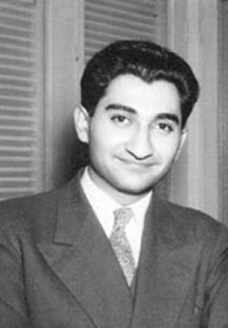
Hamid Reza Pahlavi was Reza Shah's eleventh and last born child, and a half-brother of Mohammad Reza Pahlavi, the last shah of Iran.

The Imperial State of Iran, also known as the Imperial State of Persia, was the official name of the Iranian state under the rule of the Pahlavi dynasty.
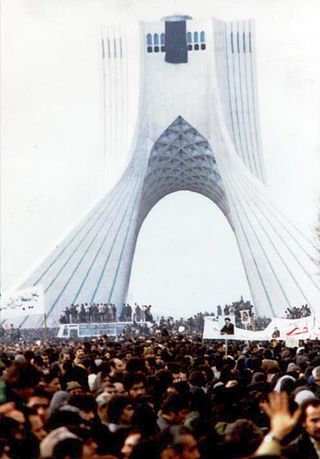
Ruhollah Khomeini’s return to Iran on 1 February 1979, after 14 years in exile, was an important event in the Iranian Revolution. It led to the collapse of the provisional government of Shapour Bakhtiar and the final overthrow of the Shah of Iran, Mohammad Reza Pahlavi, on 11 February 1979.
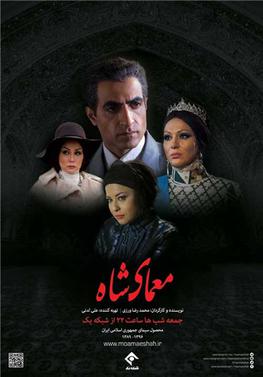
The Enigma of the Shah is an Iranian historical drama television series, directed by Mohammad Reza Varzi. The story focuses on Mohammad Reza Pahlavi, the final Shah of Iran, and the events leading up to the Iranian Revolution which led to the abolition of the monarchy.

Iran and Libya have diplomatic relations, with embassies in each other's countries. Economic, military, and cultural relations between the two countries have varied throughout time. Ties between the two nations date back thousands of years, with the origins of the Persian Empire beginning in the modern day state of Iran and the modern day Libyan state once being an essential part of the Roman Empire.

The government of Shapour Bakhtiar is the last government during the Pahlavi dynasty that ended with the Islamic Revolution. The head of this 37-day government, Shapour Bakhtiar, was one of the leaders of the National Front of Iran. The National Front of Iran had announced in a statement on December 29, 1978 that if Bakhtiar accepted the post of Prime Minister of Iran, he would be expelled from the National Front. The day after the Prime Minister was received, his dismissal was voted on at a meeting of the Central Council, and his dismissal was decided by an overwhelming majority.
References
- ↑ Afkhami, Gholam (2009). The Life and Times of the Shah. University of California Press. p. 538.
- ↑ "Iran: The Great Escape". Time .
- ↑ "Why the Shah's pilot flew Bani-Sadr to Paris". CSM.
- ↑ "Iran's most celebrated fighter pilot Col. Behzad Mo'ezzi dies in Paris aged 83". Arab News.
- ↑ "Ibani-Sadr Says He'll Stay in Paris Until Iran Takes Democratic Path". The New York Times .
- ↑ "Iran's most celebrated fighter pilot Col. Behzad Mo'ezzi dies in Paris aged 83". Arab News.
- ↑ "Why the Shah's pilot flew Bani-Sadr to Paris". CSM Journal.
- ↑ Shawcross, William (1989). The Shah's Last Ride. Touchstone. p. 125.
- ↑ Kadivar, Cyrus (2017). Farewell Shiraz: An Iranian Memoir of Revolution and Exile. The American University in Cairo Press. p. 153.
- ↑ Vatanka, Alex (2021). The Battle of the Ayatollahs in Iran: The United States, Foreign Policy, and Political Rivalry since 1979. I.B. Tauris. ISBN 9780755600052.
- ↑ "Why the Shah's pilot flew Bani-Sadr to Paris". CSM.
- ↑ Buchan, James (2012). Days of God: The Revolution in Iran and Its Consequences. John Murray Publishers. p. 294.
- ↑ "Iran's most celebrated fighter pilot Col. Behzad Mo'ezzi dies in Paris aged 83". Arab news.